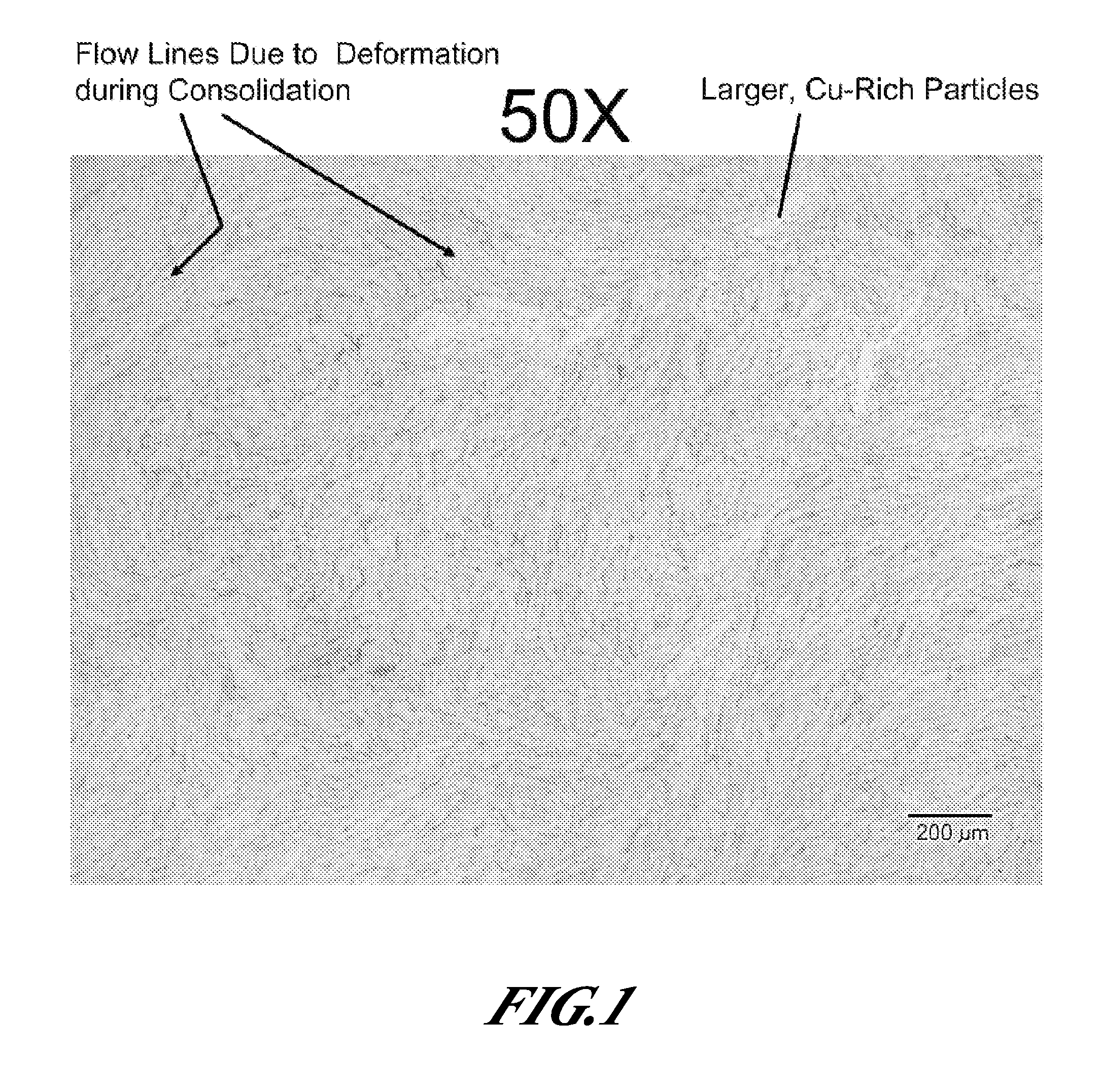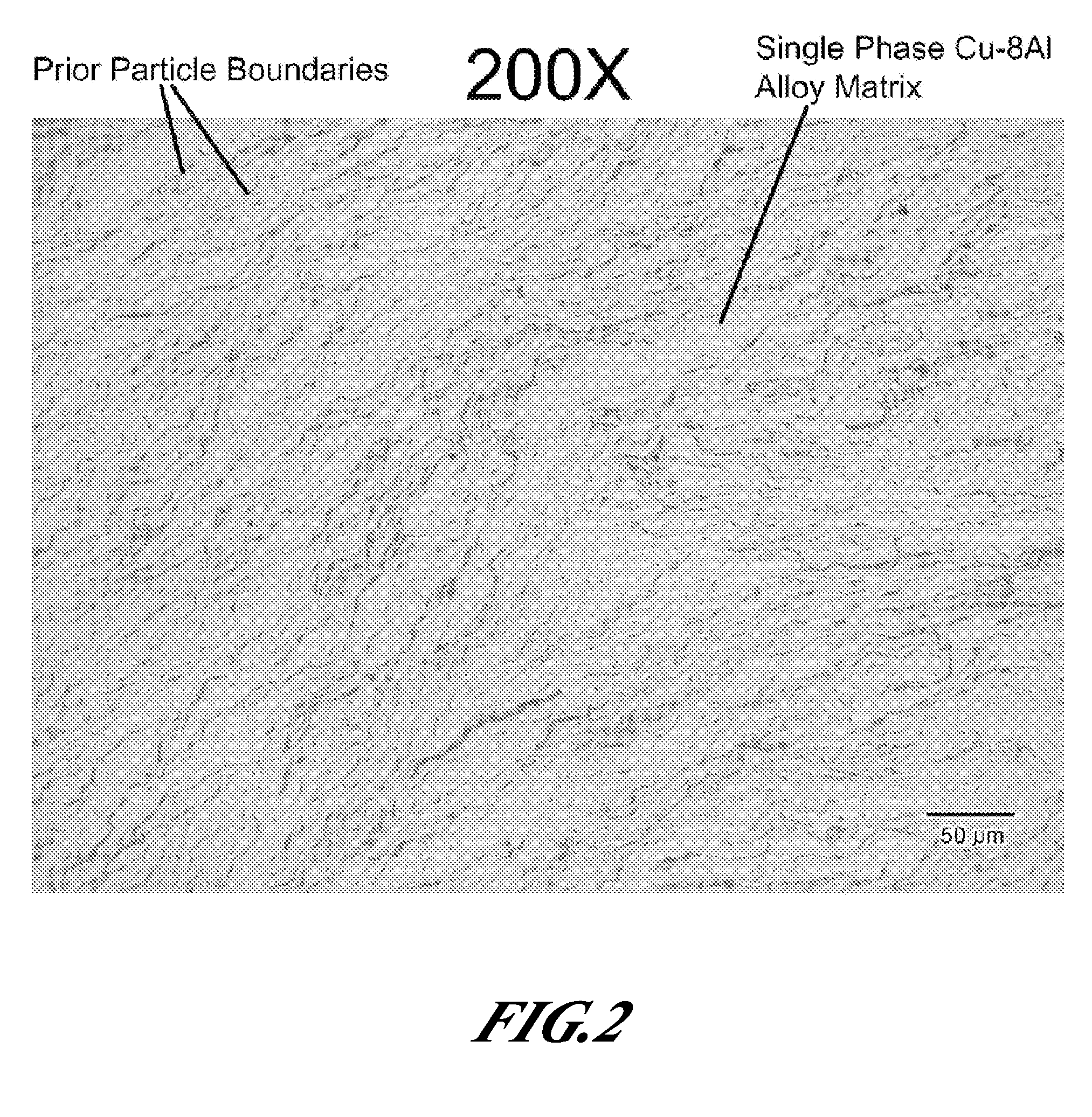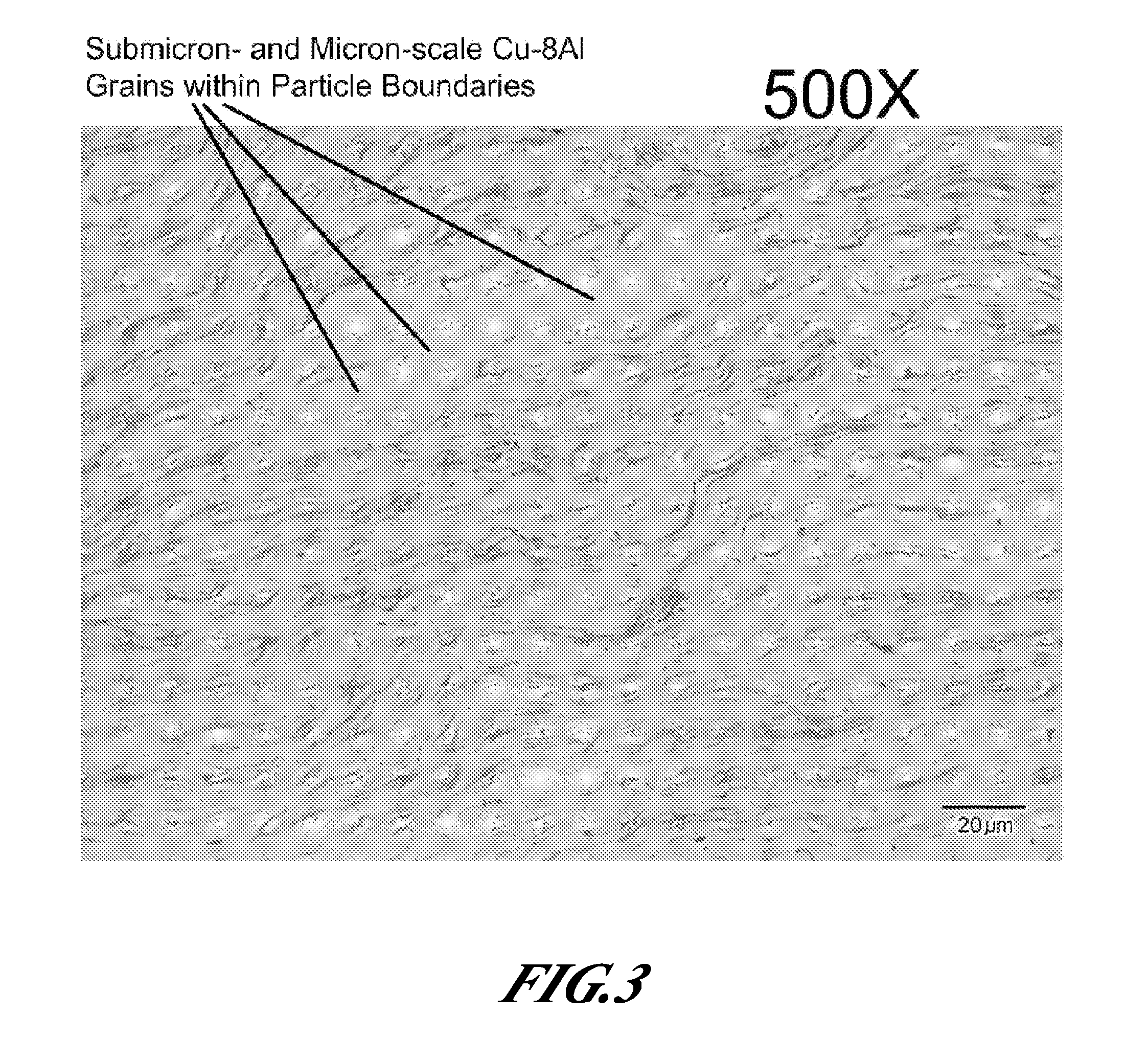Nanophase cryogenic-milled copper alloys and process
a technology of copper alloys and cryogenic milling, which is applied in the field of metal alloys, can solve the problems of beryllium oxide being a health hazard to at least some people, and beryllium being a health hazard, and achieve the effect of high strength and desirable physical properties
- Summary
- Abstract
- Description
- Claims
- Application Information
AI Technical Summary
Benefits of technology
Problems solved by technology
Method used
Image
Examples
examples
[0037]Two mill conditioning runs were conducted. These runs each included co-cryogenic milling of 460 g of copper powder and 40 g of aluminum powder for about 8 hours in liquid nitrogen.
[0038]Based on findings in the two mill conditioning runs, stearic acid was added as a process control agent. In the first run, when no stearic acid was added, it was found that the milled product showed little mixing of copper and aluminum. The mill produced a non-homogeneous mix of reddish copper powder and silver aluminum flakes. Large formations of aluminum-rich agglomerates were observed as silverfish flakes. The two powders separated upon shaking in a container. Stearic acid was added to the second conditioning run at 2 wt. %. This addition improved the properties of the cryogenic-milled product: the mixture was homogeneous with a reddish color, no large agglomerates were visible, and powder agglomerates formed small flakes and behaved like paint. There was no separation of the metal components...
PUM
| Property | Measurement | Unit |
|---|---|---|
| grain size | aaaaa | aaaaa |
| grain size | aaaaa | aaaaa |
| grain size | aaaaa | aaaaa |
Abstract
Description
Claims
Application Information
 Login to View More
Login to View More - R&D
- Intellectual Property
- Life Sciences
- Materials
- Tech Scout
- Unparalleled Data Quality
- Higher Quality Content
- 60% Fewer Hallucinations
Browse by: Latest US Patents, China's latest patents, Technical Efficacy Thesaurus, Application Domain, Technology Topic, Popular Technical Reports.
© 2025 PatSnap. All rights reserved.Legal|Privacy policy|Modern Slavery Act Transparency Statement|Sitemap|About US| Contact US: help@patsnap.com



